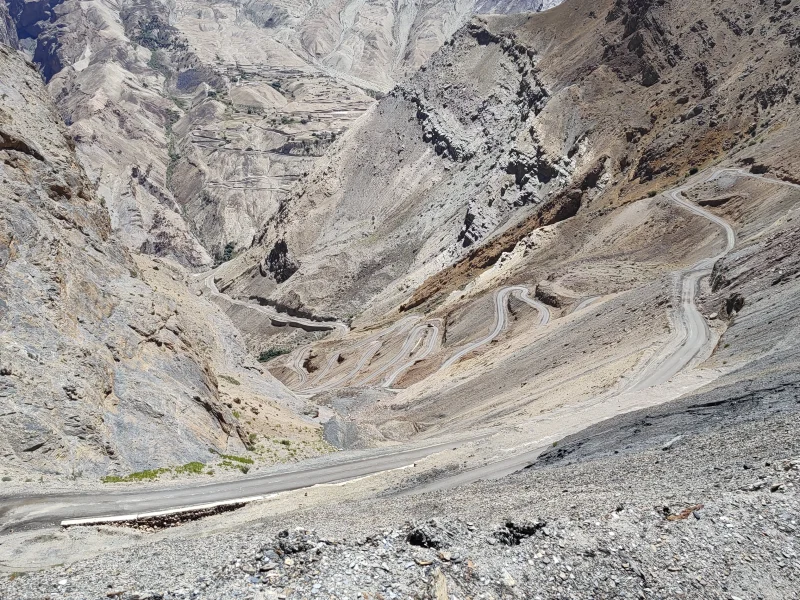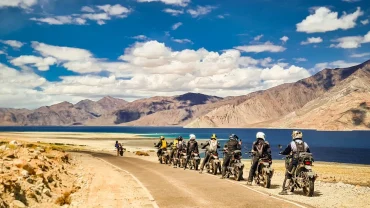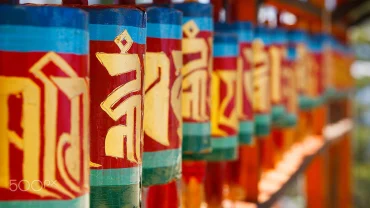Zanskar
Zanskar, a remote valley in the Ladakh region of northern India, is a hidden gem that beckons adventurers, spiritual seekers, and nature lovers. With its stunning landscapes, ancient monasteries, and rugged terrain, Zanskar promises a journey unlike any other. However, traveling to this pristine destination requires careful planning. Here’s everything you need to know before you go.

Best Time to Visit:
- Summer (June to October ): The roads to Zanskar are open, offering lush valleys, clear skies, and accessible trekking routes.
- Winter (January to March ): Ideal for the famous Chadar Trek, where you walk on the frozen Zanskar River. Winter travel is for the adventurous only, as conditions are extreme.

Reaching Zanskar & Permits
By Road:
- The primary route is from Kargil to Padum (Zanskar’s administrative center), a 230 km journey that takes 8-10 hours on rugged roads.
- A newer route via Shingo La Pass connects Zanskar with Himachal Pradesh, reducing travel time significantly.
By Air: The nearest airport is Leh, followed by a long drive to Zanskar.

Permits:
No special permits are required for Zanskar, but foreign nationals should register at checkpoints while traveling through Ladakh.

Weather and Altitude
1.Extreme Climate:
Temperatures in winter can drop to -30°C or lower. Summers are pleasant, with daytime temperatures ranging between 15°C and 20°C. Nights remain cold year-round.
2.Altitude Considerations:
Zanskar’s elevation (3,500-7,000 meters) makes it important to acclimatize properly. Spend at least a day or two in Leh or Kargil to adjust to the altitude and avoid Acute Mountain Sickness (AMS).

Accommodation and Facilities
1.Stay Options:
Zanskar offers basic guesthouses, homestays, and campsites in villages like Padum, Zangla, and Purne. Options are limited, so book early during the tourist season.
2.Connectivity:
Mobile networks are limited. Only BSNL/MTNL has partial coverage. Carry a satellite phone for emergencies if traveling in remote areas.
3.Cash and ATMs:
ATMs are sparse, with the nearest facilities in Kargil. Carry sufficient cash.

Top Places to Visit in Zanskar Valley
- Padum
- Highlights: The administrative center of Zanskar Valley and a base for exploring the region.
- Attractions:
- Stongdey Monastery: The second-largest monastery in Zanskar, offering panoramic views.
- Pibiting Monastery: A small but picturesque monastery near Padum.
- Phugtal Monastery
- Description: One of the most iconic monasteries in the Himalayas, built into a cliffside cave.
- Significance: A spiritual haven, accessible only by a trek through scenic terrain.
- Activities: Visit the monastery to experience its tranquil ambiance and unique architecture.
- Zangla
- Highlights: A serene village and an important cultural hub.
- Attractions:
- Zangla Palace: A historic fort-palace with stunning views of the valley.
- Stupa-lined trails: Perfect for peaceful walks.
- Karsha Monastery
- Description: The largest monastery in Zanskar, perched on a hill overlooking the valley.
- Significance: Home to many monks and an impressive collection of murals and artifacts.
- Activities: Attend morning prayers or explore the monastery’s ancient relics.
- Lingshed Monastery
- Description: A remote and lesser-visited monastery, offering solitude and spectacular vistas.
- Activities: Trek to Lingshed for a glimpse of traditional monastic life.
- Rangdum Monastery
- Location: Between Kargil and Padum.
- Highlights:
- A scenic monastery surrounded by rugged peaks.
- Perfect for photography enthusiasts.

What to Pack
1.Clothing:
Layered clothing is essential. Include thermals, fleece, a down jacket, and waterproof gear, especially if traveling in winter.
2.Footwear: Sturdy, waterproof hiking boots for treks and snow-resistant shoes for winter visits.
3.Essentials:
– Sunscreen, sunglasses, and a wide-brimmed hat (to protect against UV rays).
– Lip balm and moisturizers (to combat dry air).
– Reusable water bottles with purification tablets or a filter.
4.Medical Kit: Include AMS medication, basic first aid, and personal prescriptions.

Top Experiences
1.Monastery Visits:
Explore Phugtal Monastery, carved into a cliff, and the sprawling Karsha Monastery.
2.Chadar Trek: A once-in-a-lifetime experience on the frozen Zanskar River in winter.
3.Trekking Routes:
Popular summer treks include the Lamayuru to Padum Trek and routes across Shingo La Pass.
4.Cultural Immersion:
Witness traditional festivals, interact with locals, and experience the serene Buddhist way of life.

Health and Safety Tips
1.Stay Hydrated: Drink plenty of water to combat the effects of high altitude.
2.Pace Yourself: Avoid strenuous activity on your first day.
3.Local Etiquette: Respect Buddhist customs, avoid touching religious objects, and always seek permission before photographing locals.
4.Eco-Conscious Travel: Zanskar is a fragile ecosystem. Avoid plastic waste, stick to designated trails, and support local businesses.

Final Thoughts
Zanskar offers a rare blend of adventure, spirituality, and unspoiled natural beauty. While it demands patience and preparation, the rewards are unparalleled. By planning thoughtfully and traveling responsibly, you’ll not only enjoy the journey but also preserve Zanskar’s unique charm for future generations.
Pack your sense of wonder and get ready for an unforgettable adventure in the heart of the Himalayas!
Download Zanskar Info Sheet
To Book Custom Tours to Zanskar & Ladakh please leave us an enquiry –
https://planetwayround.com/contact-us/




Comment (0)